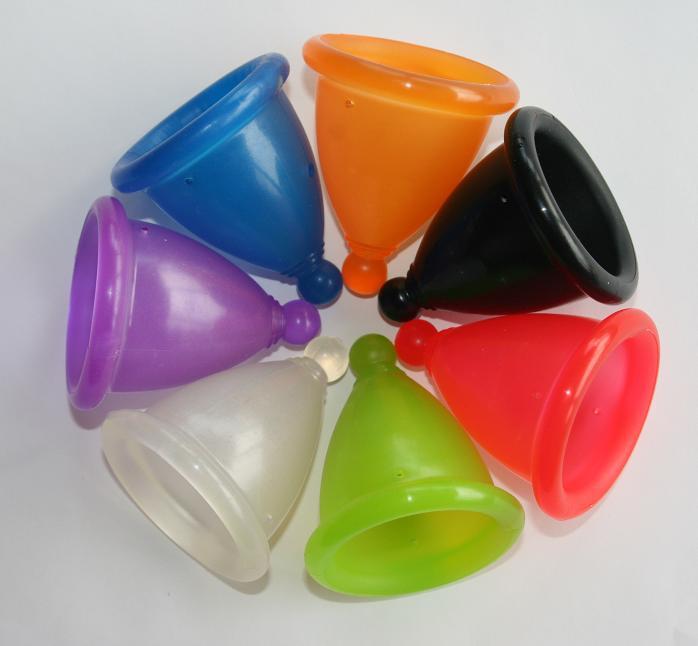A menstrual cup is a feminine hygiene product that is usually made of medical grade silicon or thermoplastic elastomers. It is shaped like a bell, and is flexible. It is worn inside the vagina during menstruation to catch menstrual fluid or blood. It can last up to 12 hours depending on your menstrual flow.

This set of menstrual cups is branded MeLuna and comes in a wide range of size, shape and color. | Photo via Wikimedia Commons
The majority of menstrual cup brands come in two different sizes. Manufacturers recommend that women under the age of 30 who have never given birth vaginally should choose a smaller menstrual cup. Women over 30 or who have had a vaginal birth should wear the larger size. Every woman is different, though, so choosing your menstrual cup depends on you. Knowing your body can help you choose what size of menstrual cup is best for you.
Here in the Philippines, menstrual cups are not popular like disposable pads. You can get your own menstrual cups via online sites, or just search the Internet for suppliers or sellers. The price ranges from P900 to P1,700, depending on what brand and size you choose. It is quite expensive, but the benefit is that you can use it up for up to 12 years. In the long run, you can save an enormous amount of money.
How are menstrual cups used?
The cup should be removed every 12 hours. You can remove it more frequently, though, if you have a particularly heavy flow. Once removed, clean it with mild soap and water, and then re-insert. At the end of every menstrual cycle it should be boiled for 20 minutes. Don’t use anything but soap and water to clean the cup, or the silicone will be damaged. Here’s a video tutorial if you want to learn more.
Why should we use menstrual cups?
There are three good reasons to use a menstrual cup:
1) Hassle-free
There may come a time when you run out of stock of sanitary napkins and you are alone. No one can buy more napkins for you, so you end up using a “pasador” (if you don’t know what a pasador is, ask your mom about it). If you have a menstrual cup with you, there’s no problem. Also, a menstrual cup is so easy to clean.
2) Nothing harmful
Unlike other feminine hygiene products, menstrual cups contain no harmful substances. They are odor-free and hypoallergenic, and there is no bacteria build-up compared to products with cotton.
3) Environment-friendly
Assuming that the average woman would go through at least three eight-napkin packs per cycle, that means a total of approximately 14,000 sanitary pads for just one woman in the 50 or so years that she has a period every month. That’s a lot of waste! Because they are reusable, with proper care menstrual cups can reduce trash disposed of in landfills.
I’m not saying that menstrual cups are perfect. They also have downsides, but if we can try them at least as an alternative for disposable pads, we can make a big difference for the environment and for ourselves.
